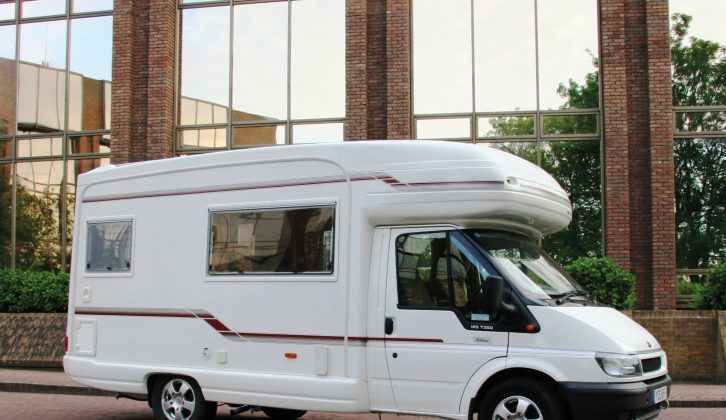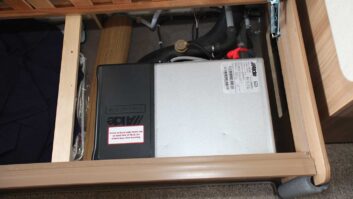We’ve received a flurry of queries regarding motorhome warranties and guarantees. Readers claim that they contain hidden clauses meant to spare the insurer from having to pay out.
I’ve read warranties from every domestic volume producer of motorhomes – the full terms and conditions (Ts&Cs) are in the public domain and available for downloading from manufacturers’ websites.
Most do not contain ‘hidden’ clauses; rather, the terms and conditions are not read carefully enough before purchase. Yes, some are unnecessarily verbose. For example, more than 5000 words were written on one aspect of a warranty we saw.
The terms ‘warranty’ and ‘guarantee’ are now interchangeable in general usage and even in some EU legislation. A guarantee is historically a promise, is usually free of additional charge and is a legally binding contract.
A warranty is an indemnity – like an insurance policy – and is generally paid for.
The warranty on a new coachbuilt motorhome usually consists of three distinct parts provided by at least two companies. These are for the base vehicle, the conversion and body integrity after the cover for the conversion has expired. The last may be offered by the converter or an insurance company on behalf of the converter.
Pre-owned ’vans may be supplied with a dealer’s warranty to cover the base vehicle and conversion.
For a warranty claim to be successful, all Ts&Cs must be adhered to, not just those concerning regular servicing and inspections. All users must also exercise their duty of care. Finally, any warranty offered must be in addition to your legal rights.
So much for the basics, but in some cases motorhome owners feel aggrieved when the guarantee seems to cover less than they’d thought it would. Perhaps a few case histories will throw more light on the subject of what’s covered by typical motorhome warranties.
Do long holidays make my warranty invalid?
One motorhome owner said that she had just been told by the Belgian importer of a new, pre-registered RV that the insurance-backed warranty limits use and lifts cover if anyone lives in it for longer than 42 days consecutively or for more than 100 nights in total in any 365-day period.
She and her partner had intended to spend the ski season abroad, and so would exceed the 42-day limit. She queried the warranty, saying she had never heard of this limitation before.
Unfortunately I had to let her know that this is not uncommon. Swift and Auto-Sleepers, for example, have a more generous limit, allowing you to spend up to 90 consecutive days abroad before it affects your warranty.
Even so, a result of this limitation is that owners of new Swift and Auto-Sleeper motorhomes overwintering in Spain or Portugal may have fallen foul of converters’ Ts&Cs for body-integrity warranties.
Owners may feel that extended occupation of their ’van is irrelevant if, let’s say, a roof-to-wall seal fails. The motorhome manufacturing trade would argue that ’vans are meant to be used as mobile holiday homes, not as permanent residences, which would put an unreasonable strain on some components.
Some warranties also impose geographical limits, often covering you just when touring the UK and mainland Europe.
Don’t you get two years’ cover by law?
Another motorhome owner asked: “Doesn’t anything purchased new in the European Union automatically have a two-year warranty?”
I don’t believe so. EU law permits a ‘right of pursuing a claim’ against a manufacturer or provider for two years (regardless of punitive warranty conditions). English law had permitted claims up to six years after purchase.
Auto-Trail’s 10-year countdown
Some motorhome owners are suspicious about longer guarantees, suspecting there must be a ‘catch’. For instance, one man said, “What does Auto-Trail’s 10-year body warranty actually cover? Am I correct to believe there is a limit on the cost of claim allowable?”
To clarify this, Auto-Trail’s body warranty covers the integrity of the coachbuilt bodywork primarily but not exclusively, water ingress and resulting damage, although not the full repair cost after year five.
From year six, Auto-Trail’s contribution is reduced on a sliding scale. By year 10, it is down to 40%. I’m not aware of any upper limit on the cost of a claim.
Detractors will argue that this isn’t a complete warranty but only 40% of one. However, the extended cover incurs no extra cost at the point of sale and a 40% contribution is better than nothing. In addition, it doesn’t affect your legal right to pursue a claim for 100% of the cost via another channel.
Here’s how much owners are expected to pay towards any Auto-Trail body integrity warranty work that might be needed.
Years 1-5: 0%
Year 2: 20%
Year 7: 30%
Year 8: 40%
Year 9: 50%
How can used motorhomes have warranties?
Some warranties on pre-owned ’vans are from motoring breakdown organisations. Most are insurance-based and have a limit on a single claim (often £500). This depends on the level of cover. I understand that, although sometimes described by retailers as ‘comprehensive’, some items are not covered and that some warranties are really designed for car buyers. Thus there is occasionally limited cover on the habitation side.
Check where the base vehicle comes from!
When another owner took his 2013 Ford Transit-based Chausson motorhome to his Ford dealer for recall work to the oil pump he ran into an unexpected warranty problem. He had noticed that the rubber seal above the driver’s door was coming adrift, so he asked them to repair it under warranty. They checked their computer and told him that it only had a two-year warranty. They suggested that it was because the ’van is French.
The owner pointed out that his Chausson was right-hand drive and was purchased in the UK! In his service book it clearly stated that the base warranty was for three years or 100,000 miles. There was also a list of applicable countries, which included France.
The owner contacted Ford’s customer relations department with the vehicle’s details. They thought that the warranty was for three years but, because years two and three were for mechanical/electrical problems, the seal wouldn’t be covered anyway.
His motorhome dealer later pointed out that it was a two-year warranty because the Ford had been imported. They could not understand why this was, but suggested it had something to do with finance tie-ups between Ford UK, Ford France, Ford Germany and others.
The owner contacted us at Practical Motorhome for advice, saying, “Why are we discriminated against in this way? Why does a delivery van that has driven tens of thousands of miles a year have a three-year warranty but mine, which has done 8000 miles in two and a half years, gets two?”
I believe that it is not where the base vehicle was retailed that is significant, but the source of the base vehicle. Although right-hand-drive, I believe this Transit was ordered through Ford of France, so the Ts&Cs for Ford vehicles from France apply.
Manufacturers have argued that warranty cost bases differ between countries. Disgruntled purchasers, however, believe that such explanations are all smoke and mirrors. My view is that it is indefensible that different warranty benefits apply among EU member states.
Finally, mechanical warranties normally have a time limit as well as a mileage limit because certain parts deteriorate over time, regardless of mileage.
We hope that you won’t need to claim on your warranty at all, of course. Find out about the most reliable motorhome brands by reading the Practical Motorhome Owner Satisfaction Awards 2016 results for new and pre-owned motorhomes.
This Transit was ordered through Ford of France, so the Ts&Cs for Ford vehicles from France apply









